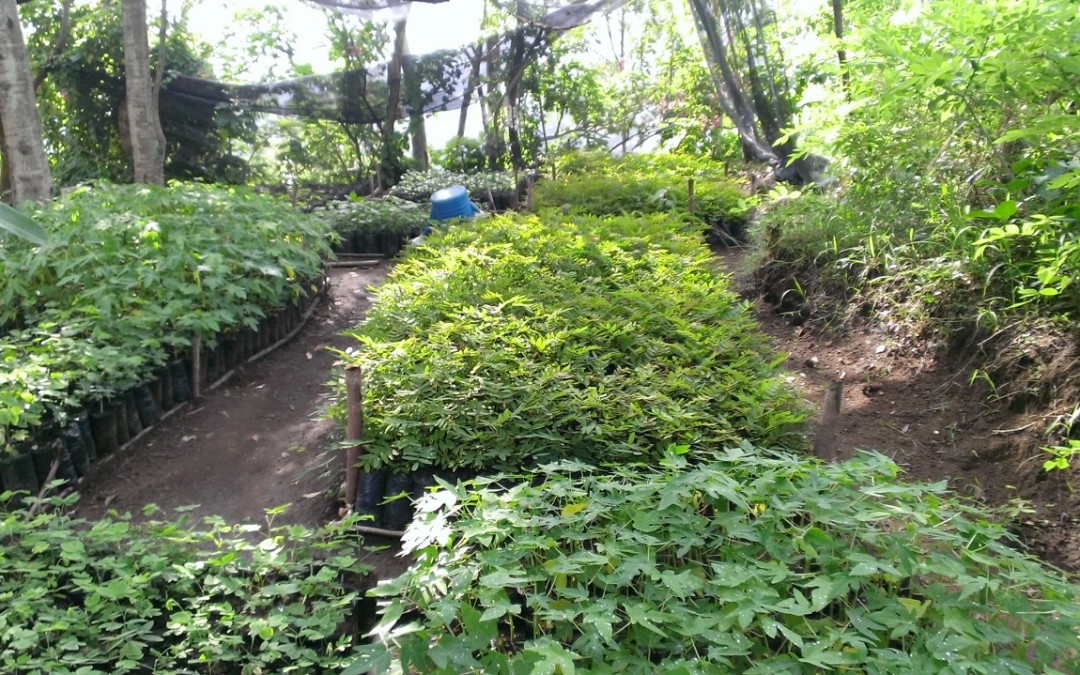Reforestation could not take place in Haiti without the pepinyè. This is the word for tree nursery in Kreyòl. In it, seeds germinate and grow up to a half-meter in size. Workers plant the seedlings twice a year in the harsh mountainous Haitian environment.
From existing CODEP forests, workers harvest, cull, and germinate millions of seeds in a rich mixture of manure and dirt. Small plastic bags are first packed tight with this nutritious and crumbly mixture. Three sizes of bags – from six to eight inches tall, with two small holes for drainage – are packed and the seeds planted just below the surface. Germination takes place in six to ten days, depending on the species.
At the site of the pepinyè, a large hole already will have been dug, where manure and scraps of food are mixed with fresh dirt to be used in packing the bags. Workers will construct a shaded area with a series of slim poles about six feet tall, held together with cross poles and tied with string. Then, broad banana or plantain fronds will be placed on top and tied down so there is significant shade so the hot sun won’t harm the delicate, new plants.
A pepinyè can be fairly large – ten by twenty meters – with ‘plots’ of seedlings separated out by species. These are one meter by two or three meters and are watered copiously every day. A pepinyè like this can hold up to 6,000 or more seedlings. With more than 70 pepinyès throughout CODEP, you can imagine that we purchase a lot of plastic bags each year!
In four to six months the seedlings are lush, green, and ready to be transported to the planting site. There, the bags are removed, a ‘wedge’ of earth is opened with a shovel and the seedling is placed behind the wedge, and more compost is pushed in around the plant, watered, and then is left to thrive in the Haitian sun.
The lush forests of CODEP all start this way

